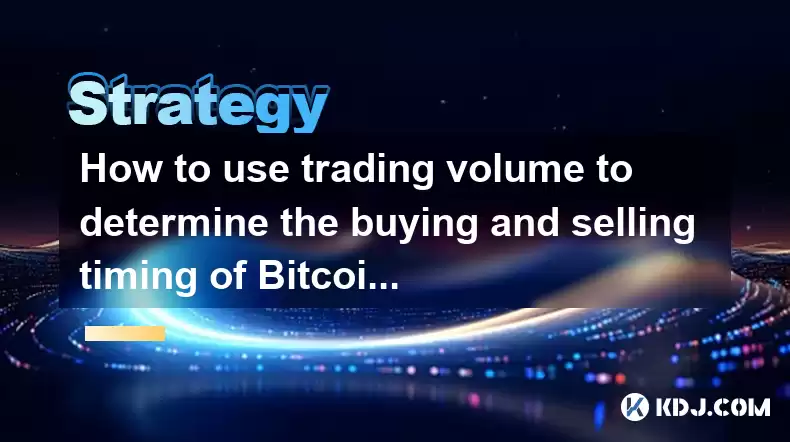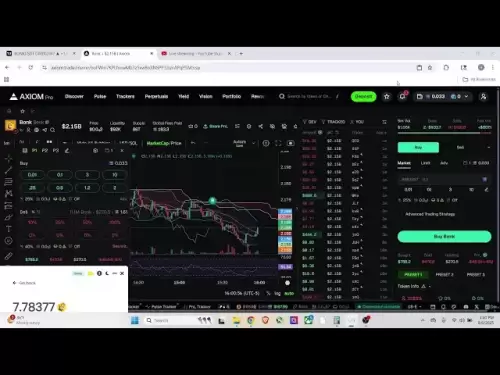-
 Bitcoin
Bitcoin $115100
1.27% -
 Ethereum
Ethereum $3675
2.71% -
 XRP
XRP $2.995
1.45% -
 Tether USDt
Tether USDt $1.000
0.02% -
 BNB
BNB $769.8
2.64% -
 Solana
Solana $168.0
3.25% -
 USDC
USDC $0.9999
-0.01% -
 TRON
TRON $0.3371
1.48% -
 Dogecoin
Dogecoin $0.2051
3.36% -
 Cardano
Cardano $0.7394
2.30% -
 Hyperliquid
Hyperliquid $38.15
0.42% -
 Stellar
Stellar $0.3966
-0.36% -
 Sui
Sui $3.486
2.93% -
 Chainlink
Chainlink $16.72
2.52% -
 Bitcoin Cash
Bitcoin Cash $568.0
4.36% -
 Hedera
Hedera $0.2440
2.59% -
 Ethena USDe
Ethena USDe $1.001
0.04% -
 Avalanche
Avalanche $22.16
2.06% -
 Litecoin
Litecoin $119.1
-0.73% -
 UNUS SED LEO
UNUS SED LEO $8.991
0.04% -
 Toncoin
Toncoin $3.232
-0.39% -
 Shiba Inu
Shiba Inu $0.00001233
2.82% -
 Uniswap
Uniswap $9.717
2.53% -
 Polkadot
Polkadot $3.664
1.85% -
 Dai
Dai $1.000
0.01% -
 Monero
Monero $281.2
-3.89% -
 Bitget Token
Bitget Token $4.350
1.55% -
 Cronos
Cronos $0.1428
5.07% -
 Pepe
Pepe $0.00001050
3.68% -
 Aave
Aave $262.3
3.54%
How to use trading volume to determine the buying and selling timing of Bitcoin?
High trading volume can signal strong buying or selling pressure for Bitcoin, helping traders identify optimal times to enter or exit the market.
Apr 20, 2025 at 06:00 pm

Using trading volume to determine the buying and selling timing of Bitcoin can be a powerful tool for traders looking to maximize their returns. Trading volume refers to the total number of Bitcoin units traded within a specific time frame, such as a day, hour, or minute. By analyzing this data, traders can gain insights into market trends and make more informed decisions about when to buy or sell Bitcoin. This article will guide you through the process of using trading volume to determine optimal trading times for Bitcoin.
Understanding Trading Volume
Trading volume is a fundamental metric in the cryptocurrency market, as it reflects the level of activity and interest in a particular asset. High trading volume typically indicates strong interest and can signify a more liquid market, making it easier to buy and sell Bitcoin without significantly impacting the price. Conversely, low trading volume may suggest less interest and potentially less liquidity, which can lead to larger price swings.
To understand trading volume, you can look at charts and graphs provided by various cryptocurrency exchanges and trading platforms. These charts typically display volume as a series of bars or histograms, with each bar representing the volume traded during a specific time period. By comparing the volume across different periods, you can identify trends and patterns that may influence your trading decisions.
Identifying Volume Trends
To use trading volume effectively, you need to identify and interpret volume trends. Volume trends can help you understand the strength of a price movement and whether it is likely to continue or reverse. For instance, if Bitcoin's price is increasing and the trading volume is also rising, this is often seen as a bullish signal, indicating strong buying pressure and potential for further price increases. On the other hand, if the price is rising but the volume is declining, this may suggest that the upward trend is losing momentum and could soon reverse.
Similarly, if Bitcoin's price is falling and the trading volume is increasing, this could be a bearish signal, indicating strong selling pressure and potential for further price declines. If the price is falling but the volume is decreasing, it may suggest that the downward trend is weakening and could soon reverse.
Using Volume to Identify Buying Opportunities
When looking for buying opportunities, high trading volume can be a key indicator. If you notice that Bitcoin's price is increasing and the trading volume is significantly higher than average, this could be a sign of strong buying interest and a potential opportunity to enter the market. To identify such opportunities, follow these steps:
- Monitor volume charts: Regularly check volume charts on your preferred trading platform to identify periods of high volume.
- Compare current volume to historical data: Compare the current trading volume to the average volume over the past few days, weeks, or months to determine if it is unusually high.
- Look for volume spikes: Pay attention to sudden spikes in trading volume, as these can often precede significant price movements.
- Combine volume with price action: Look for instances where high volume coincides with price increases, as this can indicate strong buying pressure and a potential buying opportunity.
Using Volume to Identify Selling Opportunities
Just as high volume can signal buying opportunities, it can also indicate selling opportunities. If Bitcoin's price is decreasing and the trading volume is significantly higher than average, this could be a sign of strong selling pressure and a potential opportunity to exit the market. To identify such opportunities, follow these steps:
- Monitor volume charts: Regularly check volume charts to identify periods of high volume.
- Compare current volume to historical data: Compare the current trading volume to the average volume over the past few days, weeks, or months to determine if it is unusually high.
- Look for volume spikes: Pay attention to sudden spikes in trading volume, as these can often precede significant price movements.
- Combine volume with price action: Look for instances where high volume coincides with price decreases, as this can indicate strong selling pressure and a potential selling opportunity.
Combining Volume with Other Indicators
While trading volume can provide valuable insights, it is often more effective when combined with other technical indicators. Technical indicators such as moving averages, relative strength index (RSI), and Bollinger Bands can help confirm the signals provided by volume data and provide a more comprehensive view of market conditions.
For example, if you notice a high trading volume coinciding with a price increase and the RSI is also indicating that Bitcoin is not yet overbought, this could be a strong signal to buy. Conversely, if high volume coincides with a price decrease and the RSI is indicating that Bitcoin is oversold, this could be a strong signal to sell.
To combine volume with other indicators, follow these steps:
- Select relevant indicators: Choose technical indicators that complement your trading strategy and provide additional insights into market conditions.
- Analyze volume and indicator data: Compare volume data with the signals provided by your chosen indicators to identify potential trading opportunities.
- Confirm signals: Look for instances where volume and indicator data align to confirm potential buying or selling opportunities.
Practical Example of Using Volume to Trade Bitcoin
To illustrate how to use trading volume to determine buying and selling timing, consider the following practical example:
Imagine you are monitoring Bitcoin's price and volume on a popular trading platform. You notice that Bitcoin's price has been steadily increasing over the past few days, and today, you observe a significant spike in trading volume. The current volume is much higher than the average volume over the past week, and the price is continuing to rise.
To determine if this is a buying opportunity, you follow these steps:
- Monitor volume charts: You observe the volume chart and see that the current volume is significantly higher than the average volume over the past week.
- Compare current volume to historical data: You compare the current volume to the average volume over the past week and confirm that it is unusually high.
- Look for volume spikes: You identify a sudden spike in trading volume, which coincides with the price increase.
- Combine volume with price action: You see that the high volume coincides with a price increase, indicating strong buying pressure and a potential buying opportunity.
Based on this analysis, you decide to buy Bitcoin, anticipating that the price will continue to rise due to the strong buying interest indicated by the high trading volume.
Frequently Asked Questions
Q: Can trading volume alone be used to predict Bitcoin price movements?
A: While trading volume can provide valuable insights into market trends and potential buying or selling opportunities, it should not be used in isolation. Combining volume data with other technical indicators can provide a more comprehensive view of market conditions and help confirm trading signals.
Q: How often should I check trading volume to make informed trading decisions?
A: The frequency with which you should check trading volume depends on your trading strategy and time horizon. For short-term traders, checking volume charts multiple times a day may be necessary, while long-term investors may only need to check volume on a weekly or monthly basis.
Q: Are there any tools or platforms that can help me analyze Bitcoin trading volume more effectively?
A: Yes, there are several tools and platforms available that can help you analyze Bitcoin trading volume more effectively. Popular options include TradingView, Coinigy, and CryptoWatch, which offer advanced charting and analysis features to help you make more informed trading decisions.
Q: Can high trading volume always be interpreted as a bullish signal for Bitcoin?
A: No, high trading volume can be both bullish and bearish, depending on the context. If high volume coincides with a price increase, it is often seen as a bullish signal, indicating strong buying pressure. However, if high volume coincides with a price decrease, it can be a bearish signal, indicating strong selling pressure.
Disclaimer:info@kdj.com
The information provided is not trading advice. kdj.com does not assume any responsibility for any investments made based on the information provided in this article. Cryptocurrencies are highly volatile and it is highly recommended that you invest with caution after thorough research!
If you believe that the content used on this website infringes your copyright, please contact us immediately (info@kdj.com) and we will delete it promptly.
- BlockDAG, Litecoin, and Cardano: Charting the Course in Crypto's Dynamic Waters
- 2025-08-07 09:09:06
- Fireverse Token: Igniting a Musical Revolution in Web3
- 2025-08-07 08:27:45
- Ethereum, L2 Withdrawals, and Decentralization: A New Yorker's Take
- 2025-08-07 08:32:33
- Avalanche vs. Ruvi AI: Daily Sales Tell a Story of Crypto Disruption
- 2025-08-07 06:29:35
- DeSoc: The Crypto to Buy Now for a Decentralized Future (and Maybe 43x Gains!)
- 2025-08-07 06:50:16
- Arctic Pablo Coin: Riding the Meme Coin Wave with a Deflationary Twist
- 2025-08-07 07:18:13
Related knowledge

How to avoid common crypto investment mistakes?
Jul 13,2025 at 01:35am
Understanding the Risks of Crypto InvestmentInvesting in cryptocurrency can be highly rewarding, but it also comes with significant risks. One of the ...

What is a long-short crypto strategy?
Jul 15,2025 at 10:56am
Understanding the Basics of a Long-Short Crypto StrategyA long-short crypto strategy is an investment approach where traders simultaneously take long ...

What is a long-short crypto strategy?
Jul 11,2025 at 01:28pm
Understanding the Basics of Long-Short Crypto StrategyA long-short crypto strategy is an investment approach where traders take both long and short po...

How to use the RSI indicator for crypto?
Jul 12,2025 at 03:56pm
Understanding the RSI Indicator in Cryptocurrency TradingThe Relative Strength Index (RSI) is a momentum oscillator used to measure the speed and chan...

Is copy trading a good strategy for crypto beginners?
Jul 12,2025 at 08:28am
Understanding Copy Trading in the Cryptocurrency MarketCopy trading is a strategy where novice traders replicate the trades of experienced investors a...

How to build a crypto portfolio with $1000?
Jul 13,2025 at 08:14pm
Understanding the Basics of Cryptocurrency InvestmentBuilding a crypto portfolio with $1000 starts with understanding the fundamentals of cryptocurren...

How to avoid common crypto investment mistakes?
Jul 13,2025 at 01:35am
Understanding the Risks of Crypto InvestmentInvesting in cryptocurrency can be highly rewarding, but it also comes with significant risks. One of the ...

What is a long-short crypto strategy?
Jul 15,2025 at 10:56am
Understanding the Basics of a Long-Short Crypto StrategyA long-short crypto strategy is an investment approach where traders simultaneously take long ...

What is a long-short crypto strategy?
Jul 11,2025 at 01:28pm
Understanding the Basics of Long-Short Crypto StrategyA long-short crypto strategy is an investment approach where traders take both long and short po...

How to use the RSI indicator for crypto?
Jul 12,2025 at 03:56pm
Understanding the RSI Indicator in Cryptocurrency TradingThe Relative Strength Index (RSI) is a momentum oscillator used to measure the speed and chan...

Is copy trading a good strategy for crypto beginners?
Jul 12,2025 at 08:28am
Understanding Copy Trading in the Cryptocurrency MarketCopy trading is a strategy where novice traders replicate the trades of experienced investors a...

How to build a crypto portfolio with $1000?
Jul 13,2025 at 08:14pm
Understanding the Basics of Cryptocurrency InvestmentBuilding a crypto portfolio with $1000 starts with understanding the fundamentals of cryptocurren...
See all articles

























































































